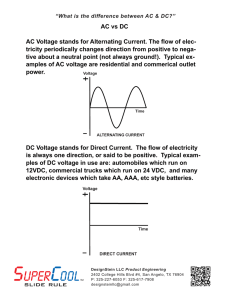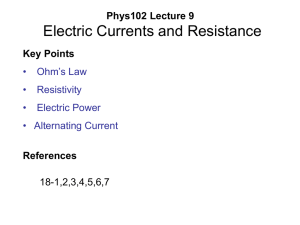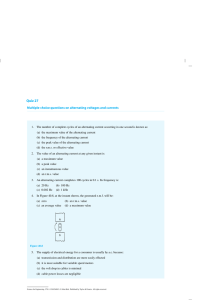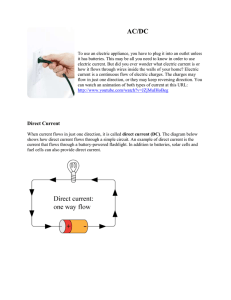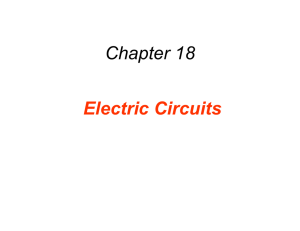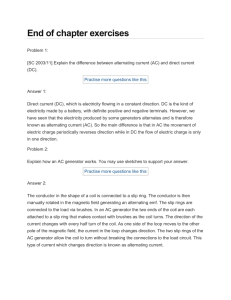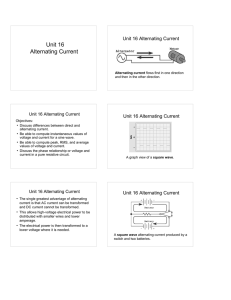ALTERNATING CURRENT (AC) VS. DIRECT CURRENT (DC)
advertisement
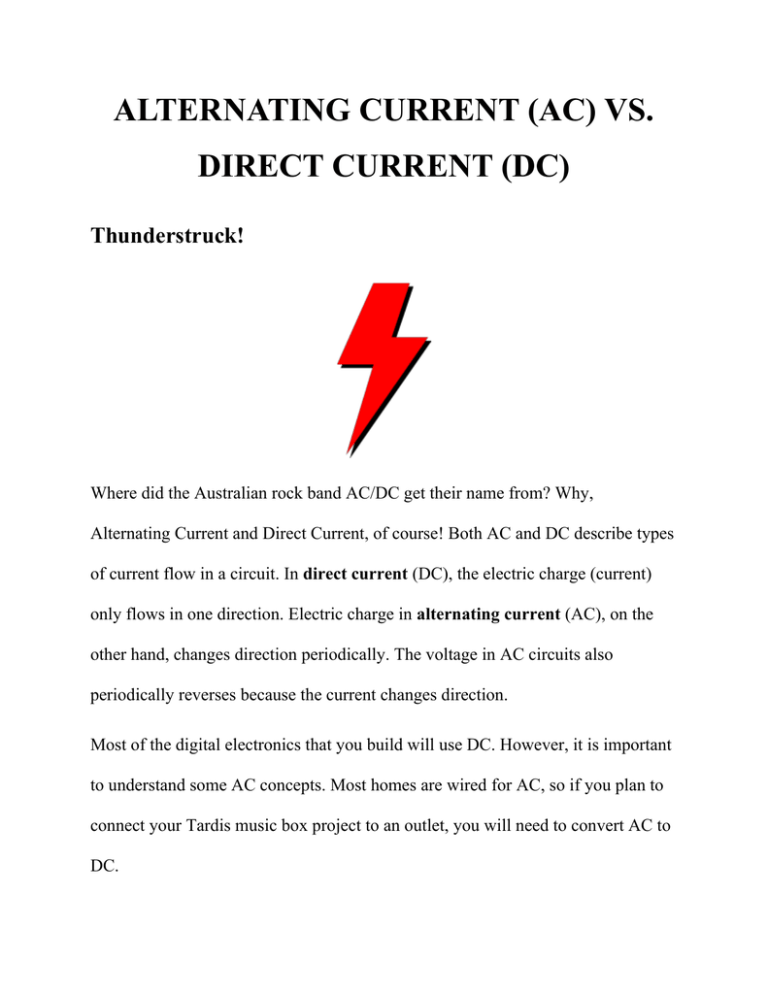
ALTERNATING CURRENT (AC) VS. DIRECT CURRENT (DC) Thunderstruck! Where did the Australian rock band AC/DC get their name from? Why, Alternating Current and Direct Current, of course! Both AC and DC describe types of current flow in a circuit. In direct current (DC), the electric charge (current) only flows in one direction. Electric charge in alternating current (AC), on the other hand, changes direction periodically. The voltage in AC circuits also periodically reverses because the current changes direction. Most of the digital electronics that you build will use DC. However, it is important to understand some AC concepts. Most homes are wired for AC, so if you plan to connect your Tardis music box project to an outlet, you will need to convert AC to DC. AC also has some useful properties, such as being able to convert voltage levels with a single component (a transformer), which is why AC was chosen as the primary means to transmit electricity over long distances. Alternating Current (AC) Alternating current describes the flow of charge that changes direction periodically. As a result, the voltage level also reverses along with the current. AC is used to deliver power to houses, office buildings, etc. Direct Current (DC) Direct current is a bit easier to understand than alternating current. Rather than oscillating back and forth, DC provides a constant voltage or current. Source: https://learn.sparkfun.com/tutorials/alternating-current-ac-vs-directcurrent-dc




